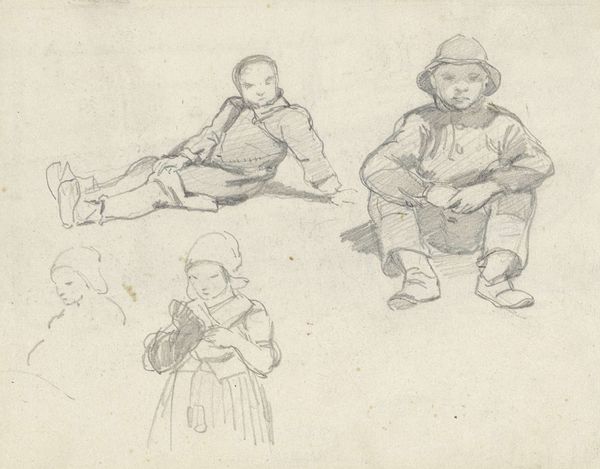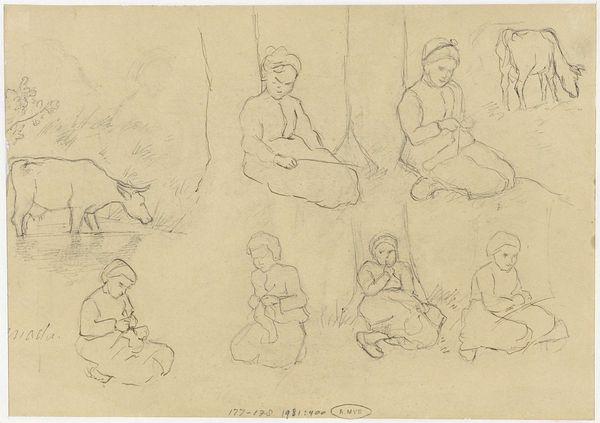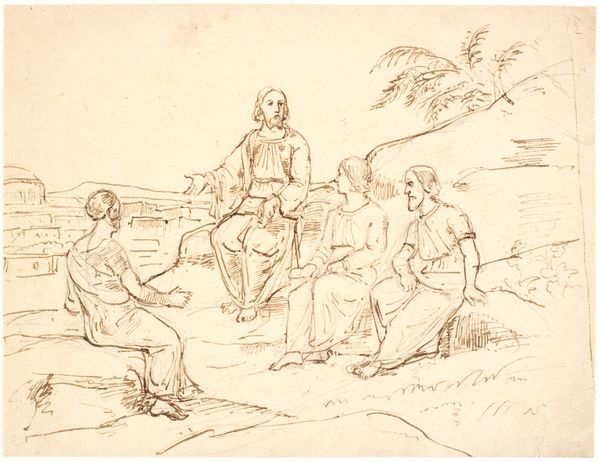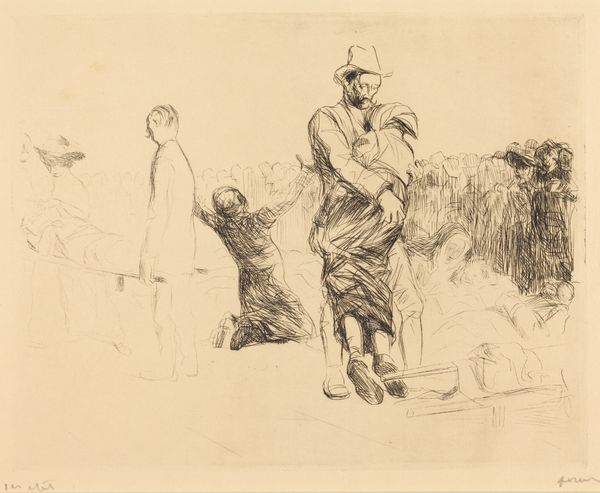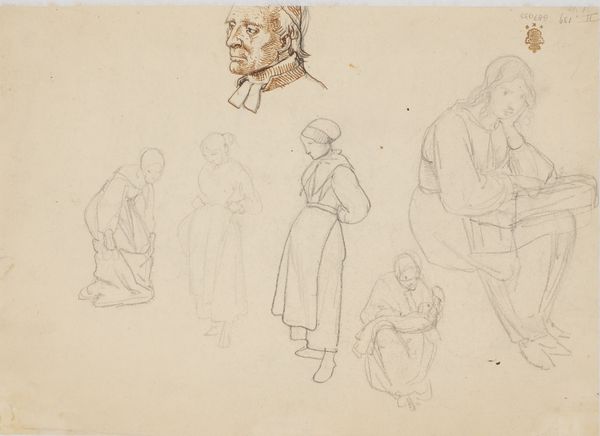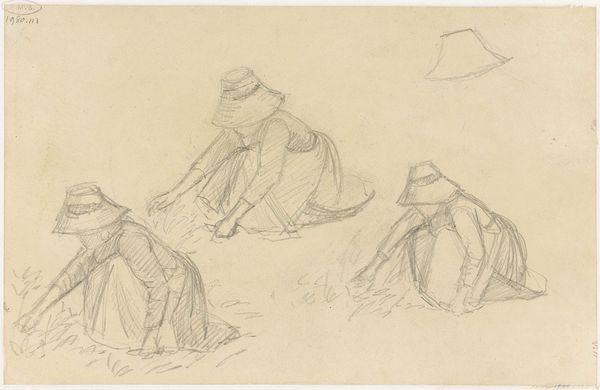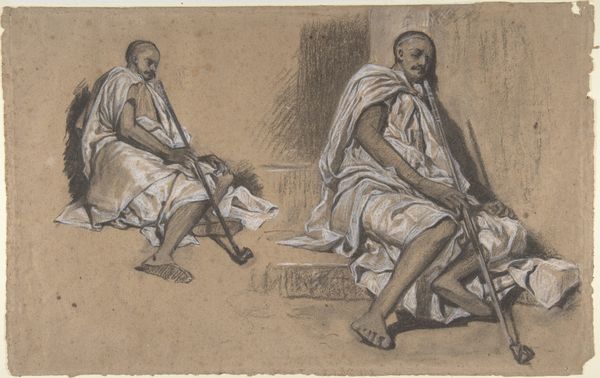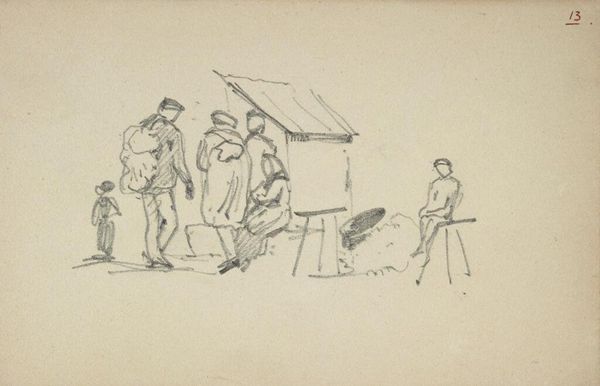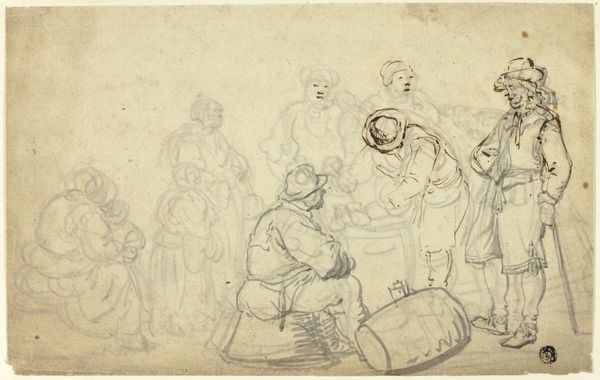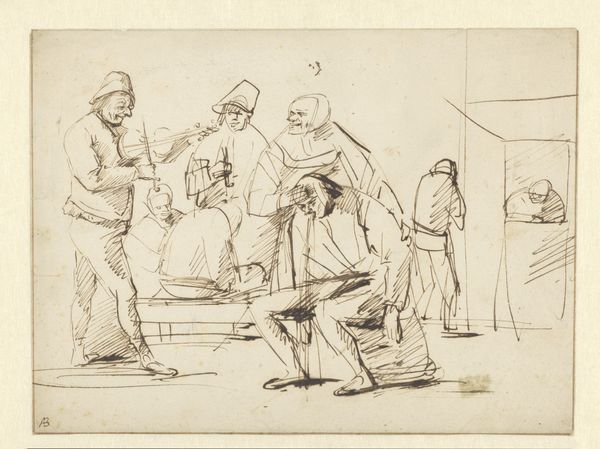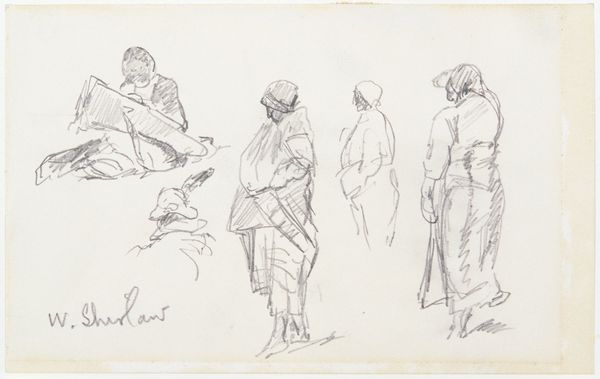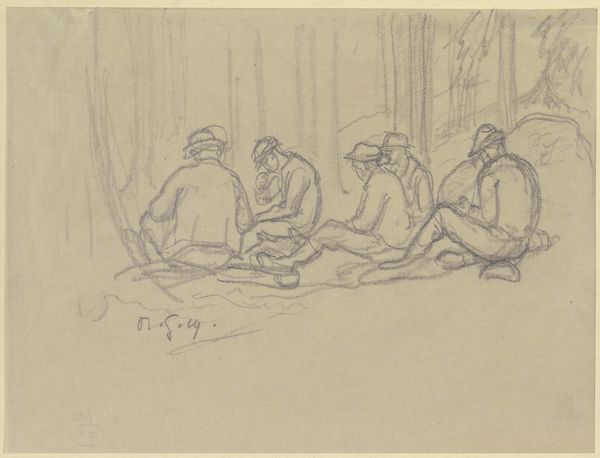
drawing, ink
#
drawing
#
figuration
#
ink
#
genre-painting
Dimensions: 295 mm (height) x 380 mm (width) (bladmaal)
Curator: What a raw and wonderful sketch this is! Peter Hansen, though the dating is a bit broad, we believe it originates sometime between 1868 and 1928, captured this genre scene titled "Roeoptagere. Studieblad," or "Beet Harvesters. Study Sheet." Look closely—it’s rendered in ink, quick and decisive, a real glimpse into his process. Editor: Yes, and it feels like more than just a glimpse; it speaks volumes about the social conditions of agricultural labor. I’m immediately struck by the hunched postures of these workers, particularly the figure bent double, harvesting. There’s a real sense of weight here, not just physical exertion, but also perhaps the burden of their class. Curator: You're right; that posture, the line of the back mirroring the curve of the earth, really gets to me. But it’s also got this, I don’t know, fleeting quality? Like he’s capturing them mid-breath, existing as opposed to posing, or conforming to an image. Editor: Absolutely. And consider the repetitive nature of beet harvesting, row after row, day after day. Hansen isn't just portraying individuals but capturing a collective experience. I'm interested in the clothing as well: the head coverings, the loose garments—signs of practicality and modesty, but also potential markers of identity and belonging within a rural community. Curator: And it makes you think about the relationship between the artist and the subject. Hansen seems to approach this with an almost tender observation; there’s respect evident in the quick rendering, as though he doesn't want to disrupt them for more than a second while still bearing witness. The way the figures occupy the space as opposed to dominating, too—no real imposition, like they have been paused for a quick sketch and that's that, now let's keep working. Editor: That tender observation you mention is critical, especially considering who gets to represent whom. In art history, working-class people have often been either romanticized or demonized. Hansen, it seems, aims for neither. Curator: So it's more "here" than "this"? Beautiful, really. Looking again at the sketchiness... the openness... Editor: I agree. It invites the viewer to fill in the blanks, to consider the context and the complexities of the lives depicted. A quiet work that speaks volumes, really. Curator: Precisely! I’m really seeing the subtle act of documenting a world both familiar and easily overlooked. Editor: And hopefully, encourages us to not look away.
Comments
No comments
Be the first to comment and join the conversation on the ultimate creative platform.
